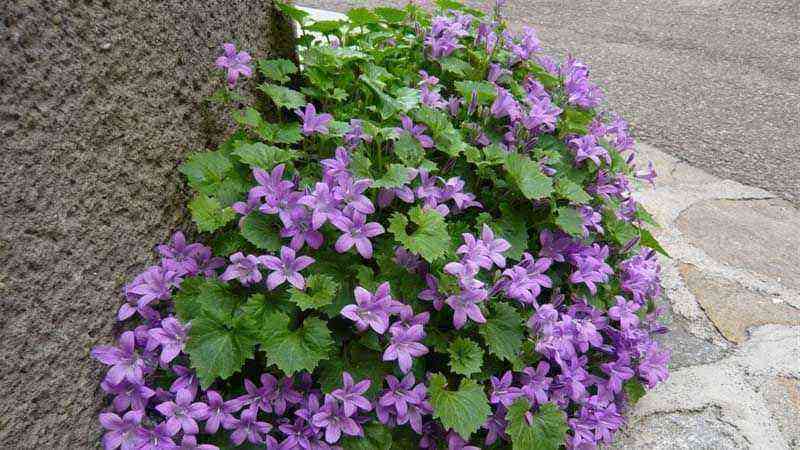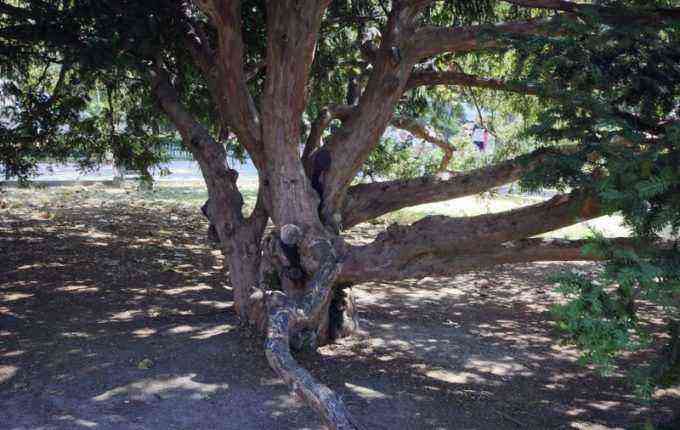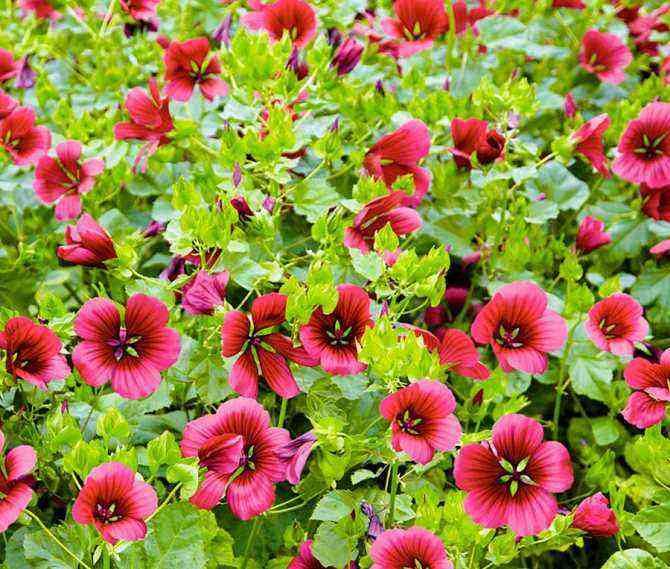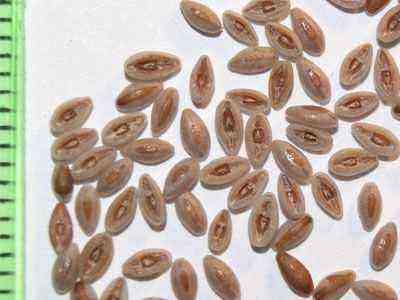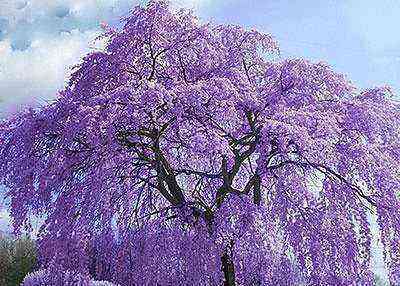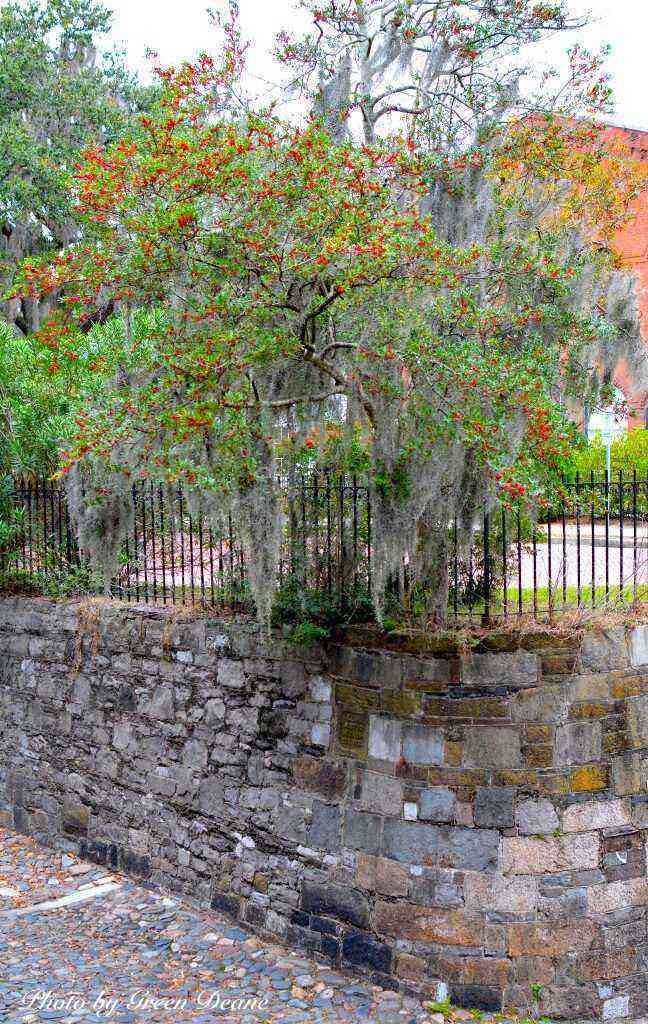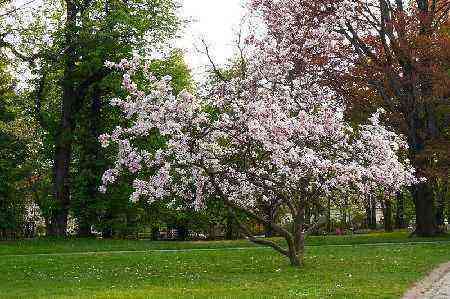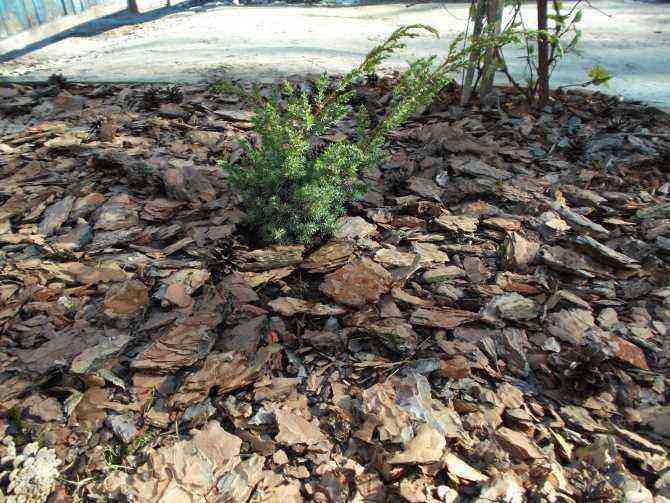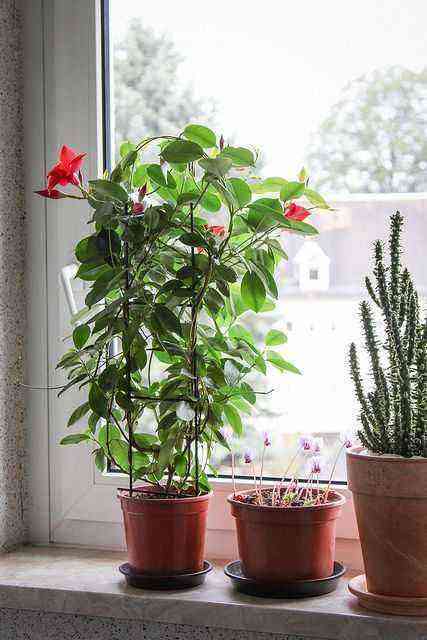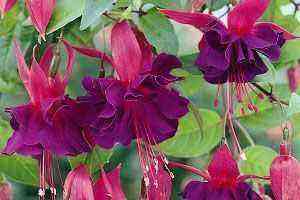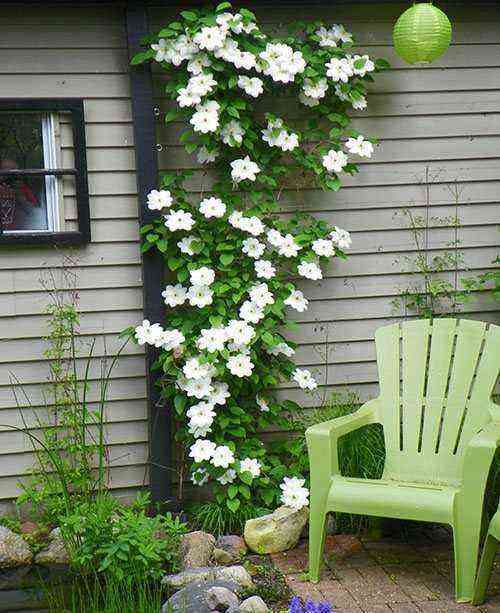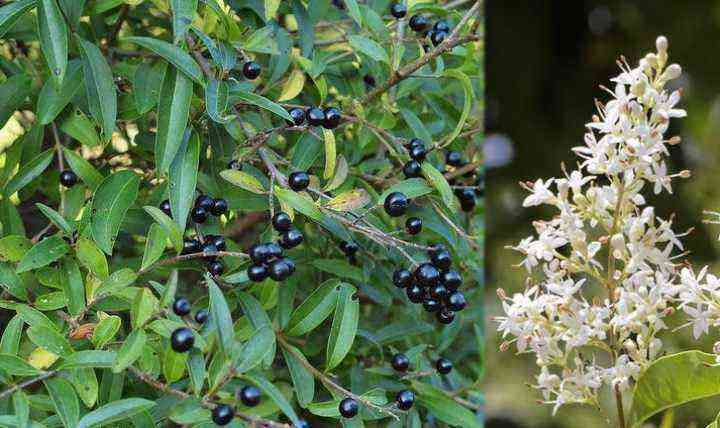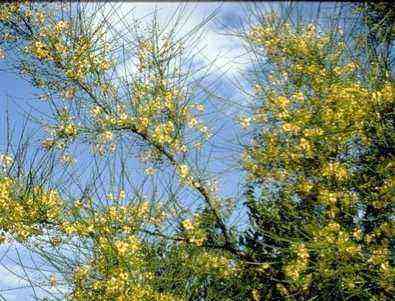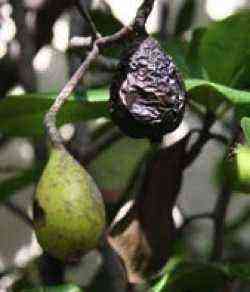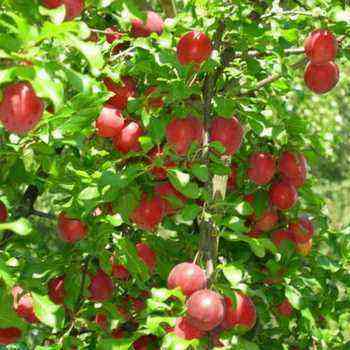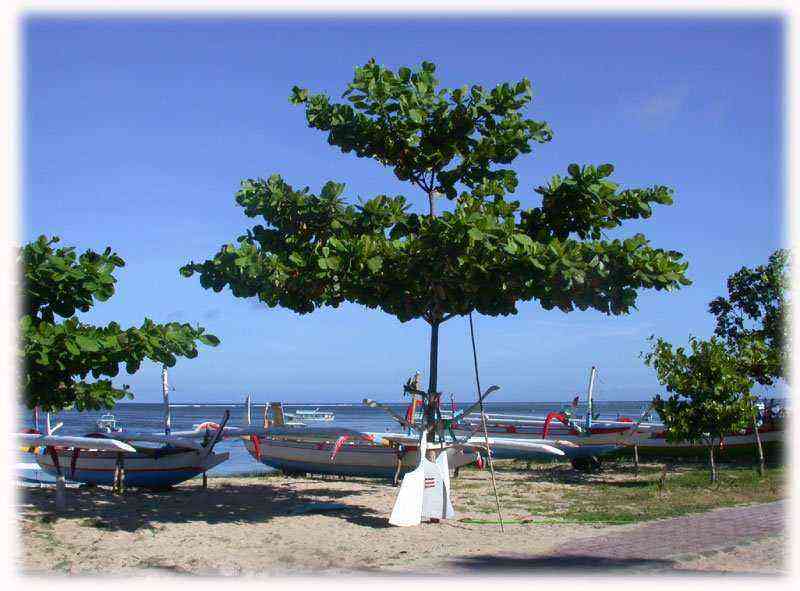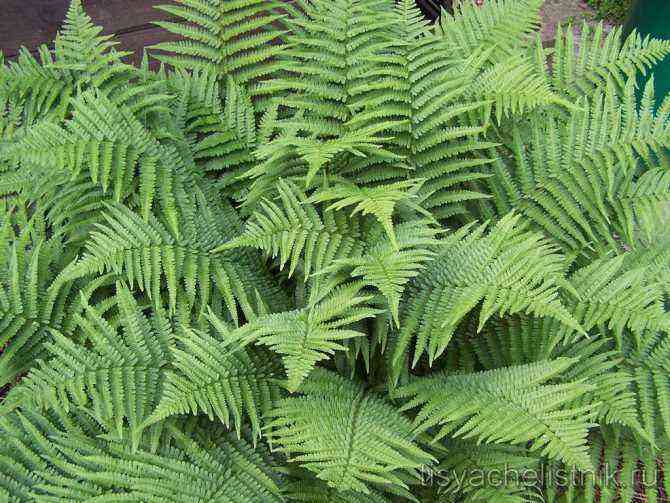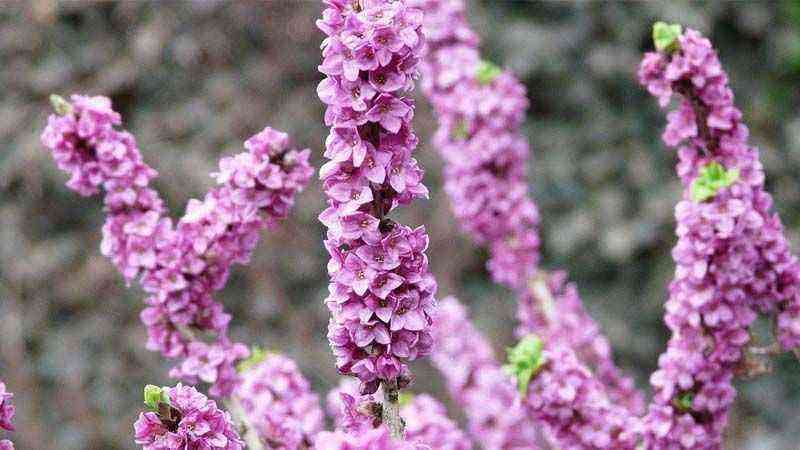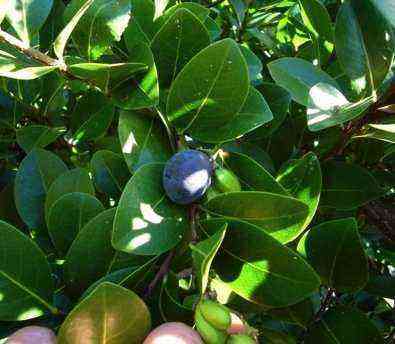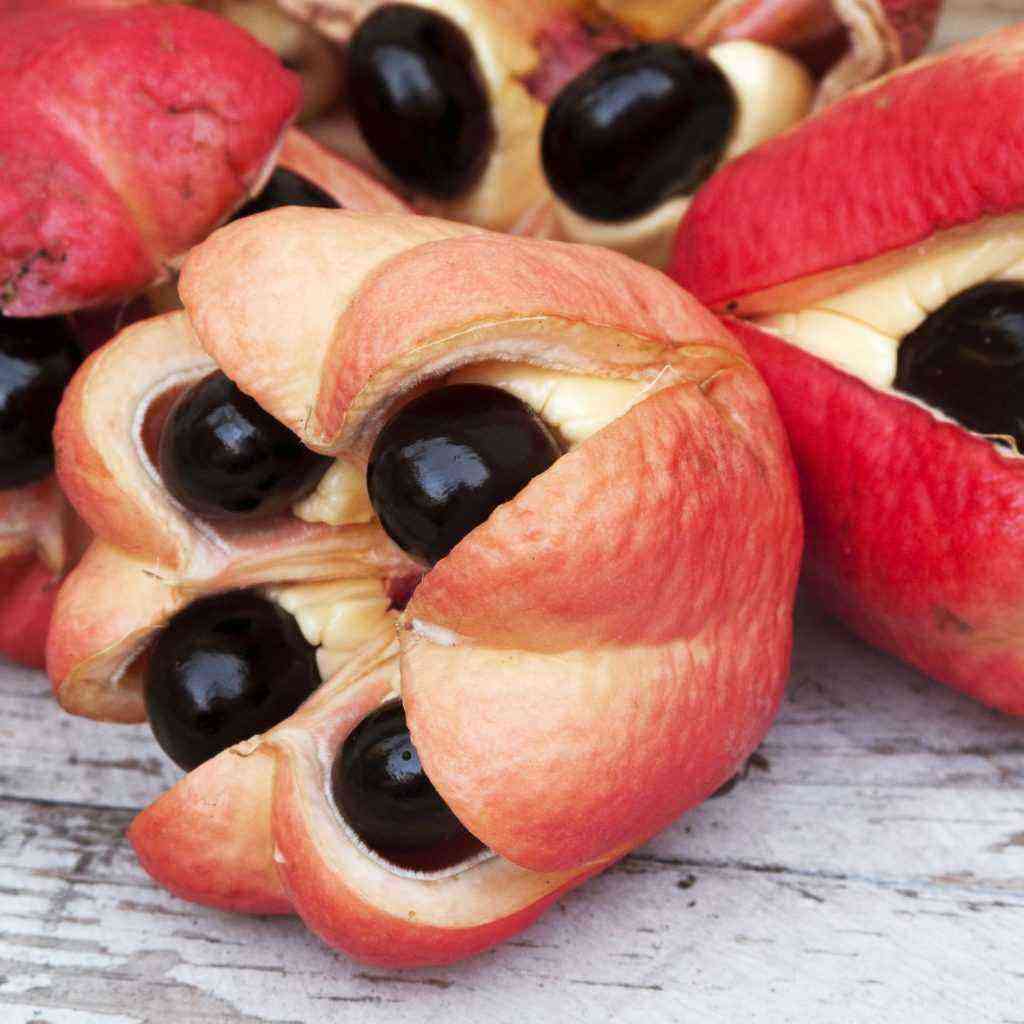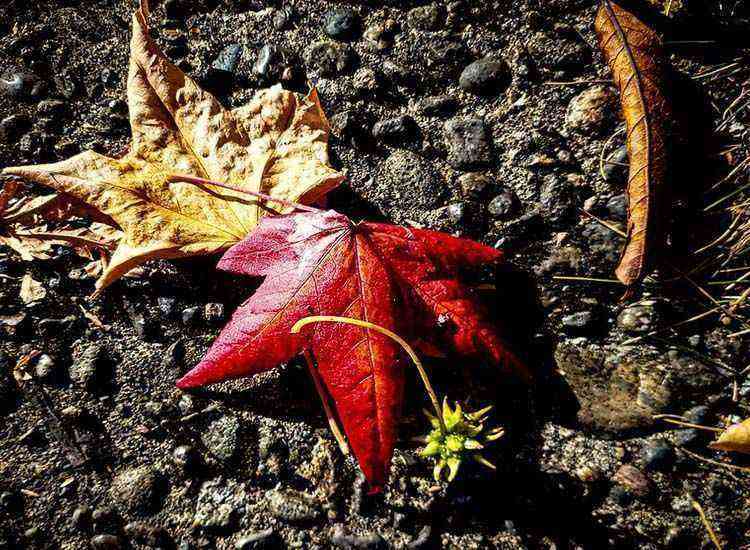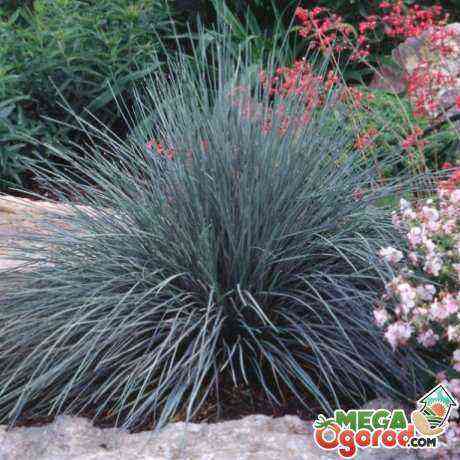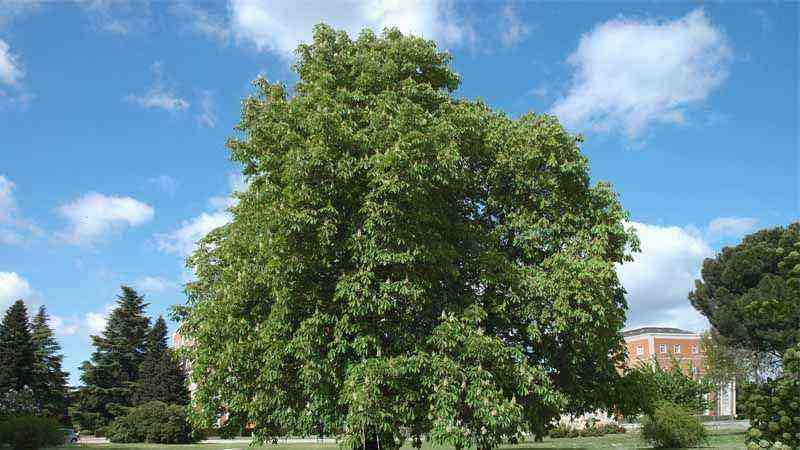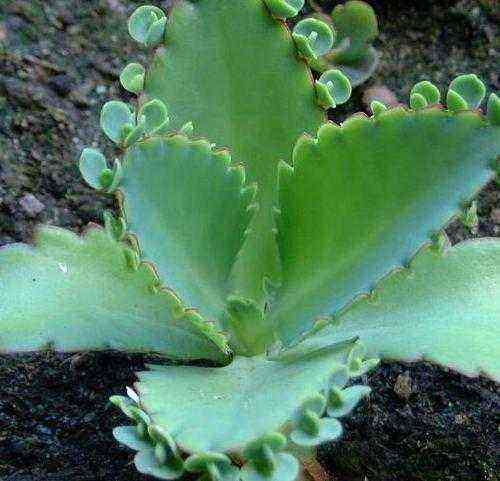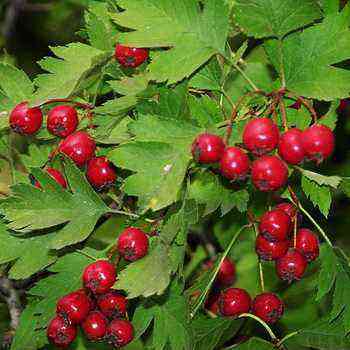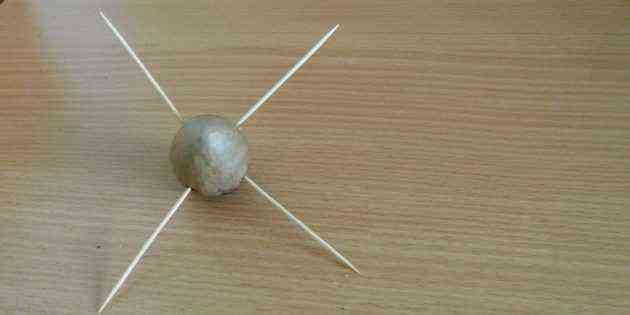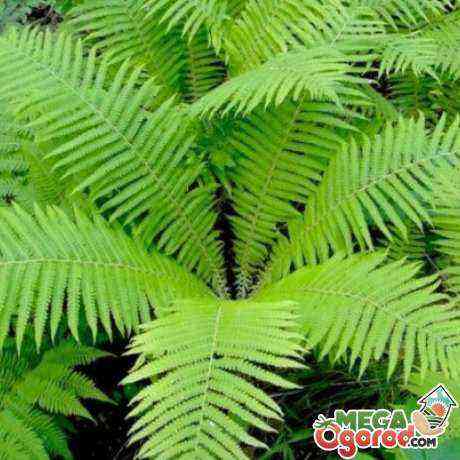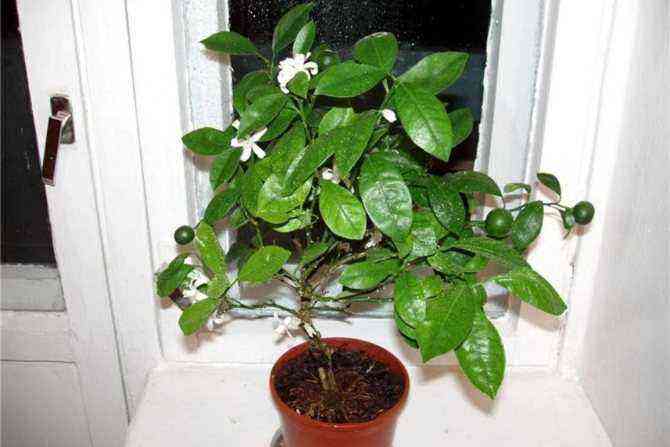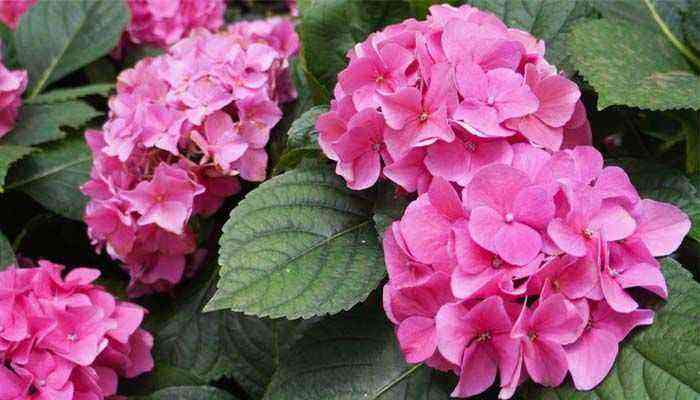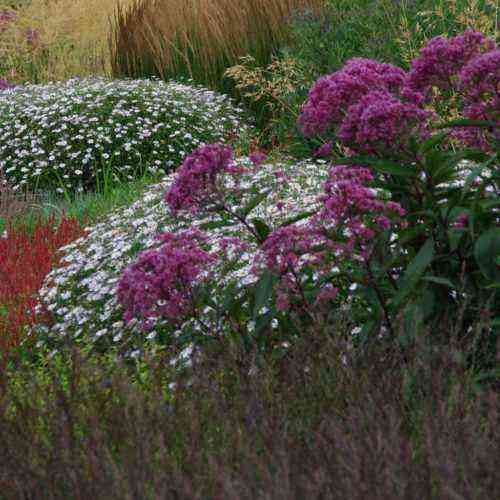
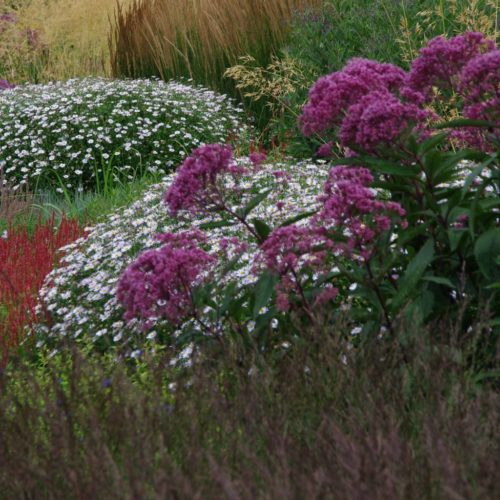
Description
In order to understand that it is the steep tree in front of you, you should pay attention to the base of the leaves, which is wrapped around the stem. From the side it seems that the stem is breaking through the leaf. This is a perforated arrangement of leaves.
It grows in the humid environment of North American swamps and has a long history of use. Although it is still occasionally grown and harvested as a medicine, it is increasingly being used by gardeners for landscaping.
The bone sap belongs to the Astrov family. The bushes of the plant can reach a height of several tens of centimeters to two meters or even higher. Its leaves grow on opposite sides of the stem and join at the base. The flowers are very small, tubular, depending on the variety, they can differ in shade and be white or pink in different shades. They appear in flat clusters at the tops of the shoots towards the end of the last month of summer. Other names: Joe Pie weed, White crayfish necks, Mist flower.
Flowering time usually occurs in late summer or early autumn. Most often in early August.
It is quite easy to grow the plant, no special care is required. The best habitat is swampy ground and along the streams. Increasingly, the flower is used as a supplement in flower beds, however, it requires frequent watering. The plant can be grown from seed, but then there will be no flowers for the first three years..
The bush can withstand frequent flooding. Planting is best done in spring or autumn in a place with high light. Bone sap is widespread in the eastern half of the United States and Canada, Texas, Oklahoma. These are always straight upward stems.
When it’s time to bloom, it’s hard to miss because of the vibrant colors. This hardy species can tolerate dry soil, but not for long. It is a boon for pollinators, it grows and blooms from year to year.
The vast majority of tall plants are female. In fact, only populations found in the Ozarks have been found to be sexually viable. This is quite a fascinating fact considering how widespread this species is in North America. A careful study of the genome showed that the sex plants were genetically diploid. They produce sterile male parts that either severely deform the pollen grains or do not produce pollen at all.
Populations of high varieties do not reproduce vegetatively, they need to be cross-pollinated in order to obtain seeds.
This is not the case for female plant groups that create seeds on their own, without any pollen. Such material is essentially clones of the mother bush. Asexual reproduction is quite beneficial for this plant. The offspring obtained from these seeds have the same genetic makeup as the mothers, and by their very nature they are well adapted to any conditions in which their parents grew up. Thus, the flower can easily colonize a territory and expand its presence.
Features of the stethoscope
Sapwood is an annual rhizome or perennial, which is represented by herbaceous plants and dwarf shrubs. Straight shoots are decorated with opposite foliage, which is less often whorled or alternately located. Finger-lobed or pinnate leaf plates have a solid or toothed edge, they are petiolate and sessile, and their shape is oblong, rhombic, ovoid, elliptical, linear or lanceolate-lanceolate. The foliage surface can be rough, smooth, or pubescence is located on it. Baskets are made up of small tubular flowers that can be pink, bluish-lilac, purple or white. Baskets are part of complex panicle, racemose or corymbose inflorescences. The fruit is an achene.
7 reproduction
7.1 Growing from seeds
Bone sap is propagated by seeds, which are sown in March for seedlings. For seedlings, they take flower pots, arrange drainage in the form of expanded clay, broken brick or clay shards and fill them with loose, nutritious flower soil.
The soil is watered abundantly, and the seeds are sown, covering them with a layer of soil 7-10 mm thick. To create a greenhouse effect and maintain high air humidity, the seedlings are covered with a transparent film from above and left in a warm, illuminated place.
↑ Upward,
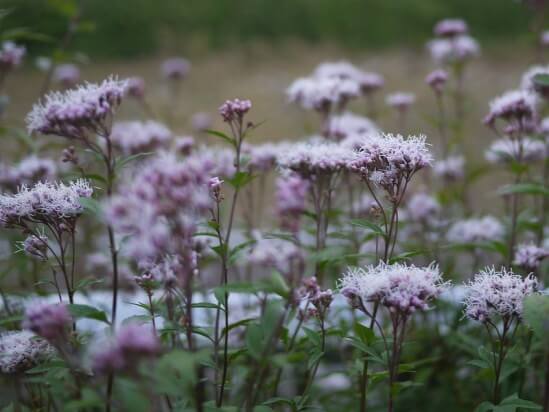

After 2 – 3 weeks after sowing, the first shoots appear, at which time the shelter can be completely removed.
Plants are dived into separate containers if sowing was carried out in seedling boxes. The best time for picketing is the period when each bush can boast of real 4 leaf blades.
↑ Upward,

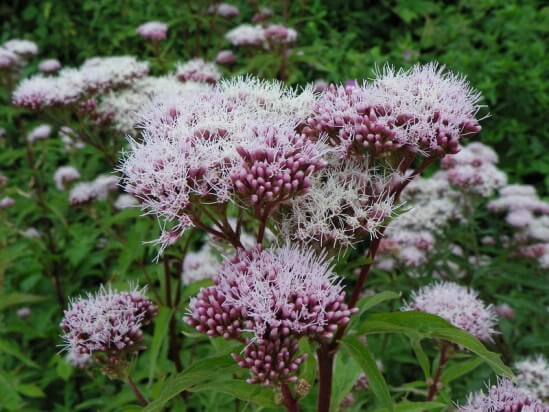
The first buds will appear on plants grown from seeds after 3 years.
Seed propagation is quite easy and self-sown young plants can even be found under mature bushes when grown outdoors.
↑ Upward,
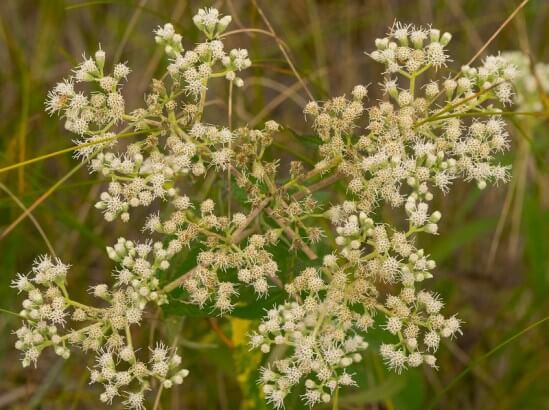
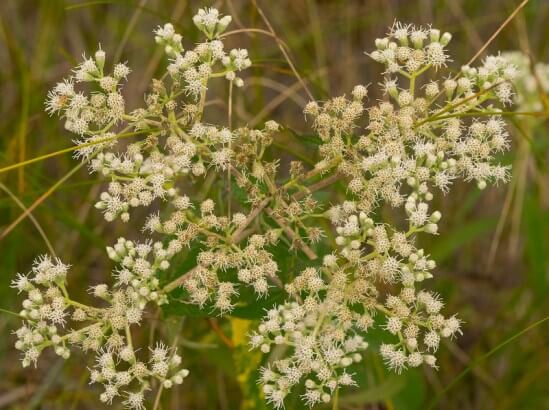
7.2 Cuttings
The steep can be propagated vegetatively or by cuttings. Half-ripe stem cuttings at the beginning of summer are separated from the main plants with a sharp sterilized garden tool – a pruner or a knife. Each cutting should have 3 leaf nodes.
The bases of the cuttings are powdered with powders containing plant growth hormones and immersed in loose soil consisting of peat and river sand 1 cm deep at a slight angle.
↑ Upward,

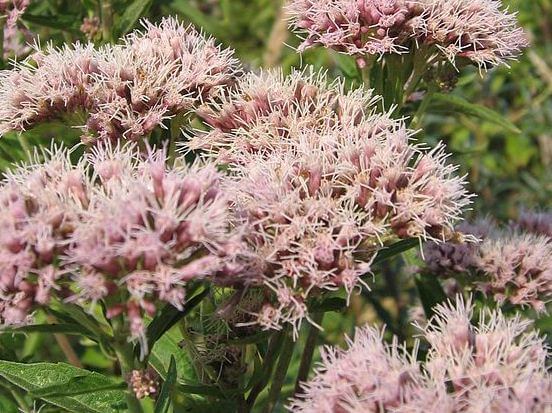
Within a month, signs of new growth can be noticed at the base of the cuttings – this will indicate that the first roots have appeared under the soil surface. In August, these plants can be transplanted into open ground.
↑ Upward,
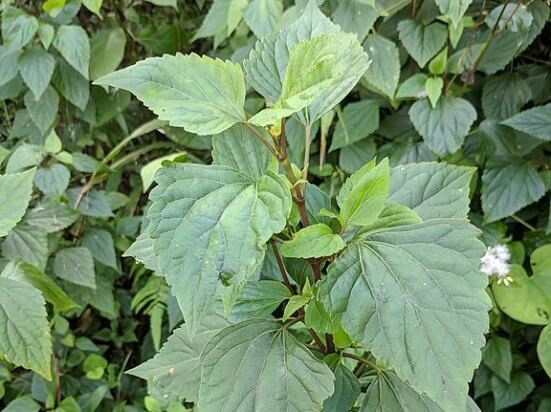
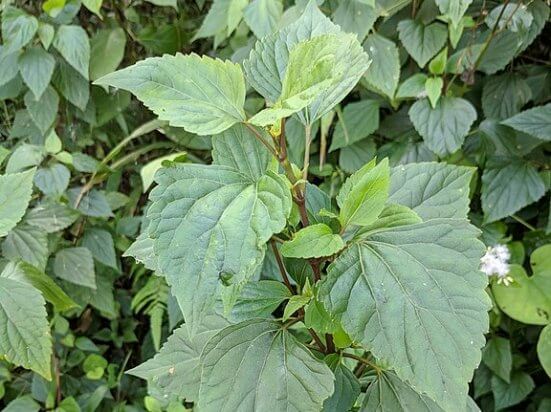
7.3 division
Adult specimens can be propagated by division during transplantation. For the procedure, the plants are dug up and the root system is shaken off the ground.
The sites of the division are outlined, making sure that each division has its own root system and a well-developed aerial part.
Dividing an adult bone marrow is not an easy task, since the bases of the stems become thick and lignified with age, which means that you may even have to use an ax or a saw.
↑ Upward,
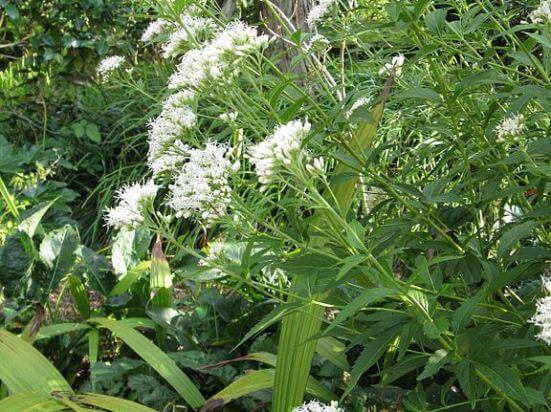
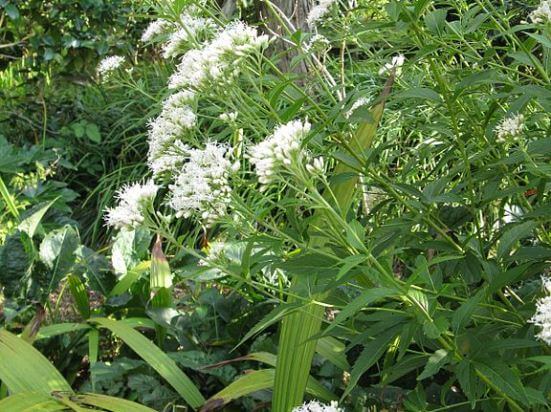
Features of landing
When planted in open beds, the steep shows tiny flowers that gather in bunches in late summer or early fall.
Most often it can be found in fields and meadows, but it is not difficult to grow a flower in the garden.
The seeds can be germinated indoors or outdoors after the last frost has hit. Growing indoors has several benefits. Being very tiny in size, the seeds will not be washed away by rain or eaten by birds. It is easier for the grower to maintain the required soil moisture level when they enter the germination stage.
Stem tree will grow well in partial shade, as well as in a place where there is a lot of sunlight. The plants are quite tall, and its branches are up to 1 meter wide, so it is worth keeping a free space of about two meters between them. The shoots are strong and do not require trellis support. Watering once a week is sufficient, twice a week during dry periods.
Planting time largely depends on what kind of planting material the gardener chose. If this is a rhizome, then all work is transferred to mid-spring, when there will definitely be no big frosts. There will be enough time during the warm period for the bush to take root and prepare for wintering. If seedlings are planted, then this is exclusively the beginning of summer.when the air temperature is already warm around the clock. The seeds are planted in early spring.
When choosing a suitable place, it is better to stay where there is enough sun during the day, since in the absence of it, the shrub may stop blooming.
There must be a properly done drainage in the ground. In addition, the soil is additionally fertilized. If it is sandy soil, which is very poor in the presence of beneficial trace elements, manure is used. Before planting, the territory is dug up and stones, if any, are removed. They prevent the roots from developing well, and as a result, the whole bush suffers.
Bone meal can be used as an additional fertilizer. When planting several shrubs in the form of rhizomes, they are buried into the ground by at least 5 centimeters. It would be nice to do mulching using peat, humus or sawdust, which is laid on top. This method allows you to additionally provide good protection against moisture loss and weed germination.
The first watering is done more often, the main thing is to achieve rooting of the plant. Planting holes must also be prepared for planting seedlings.
It is advisable to put fertilizer inside, since such seed is more capricious than a simple rhizome. You can use not only bone meal, but also ash or even humus. Or you can have all three components in a ratio of 1: 3: 6. An adult stethoscope is a very frost-resistant plant that can withstand temperatures down to -25 ° C.
9.Healing properties
In folk medicine, all parts of the plant are used – leaves, roots and inflorescences. Stemnik is used as an anti-inflammatory, diaphoretic, expectorant, pain reliever, wound healing, laxative.
On the basis of extracts of this shrub, various ointments, tinctures and decoctions are prepared.
↑ Upward,
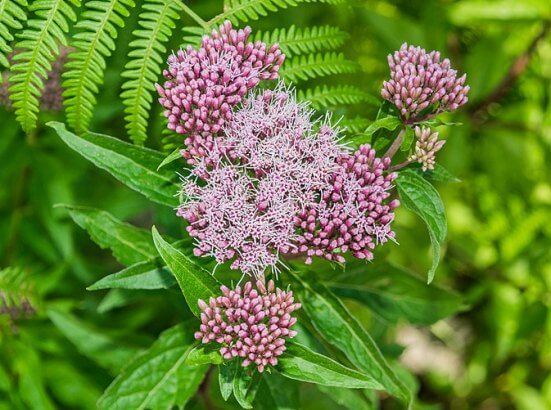
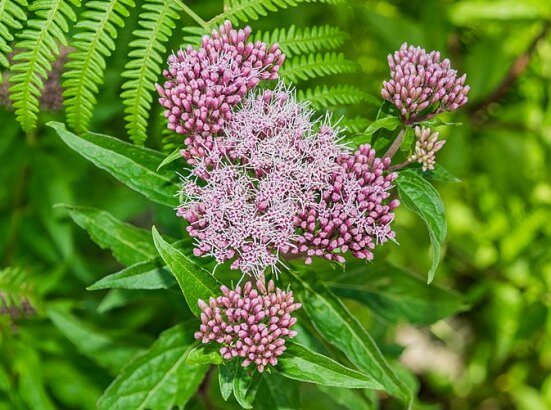
There are also some contraindications when using the stethoscope for medical purposes. Since all parts of the plant are poisonous, you need to be extremely careful and take it under the supervision of doctors. It is forbidden to give plant-based products to children under 18 years of age.
↑ Upward,

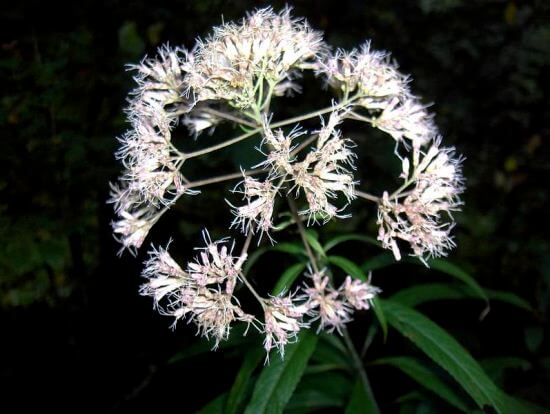
Skeleton in landscape design

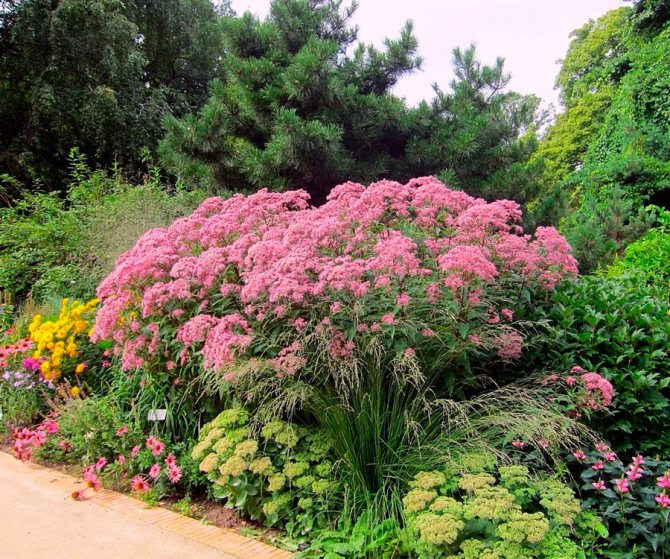
Bristlecone can be cultivated as a single plant, and it is also used as a background for other horticultural crops. This plant looks great in the background of a mixborder or in the middle of a green lawn. It is often used to decorate artificial or natural reservoirs. The slope planted by a group is able to disguise an unsightly structure or a fence. Vigorous varieties, covered with frost or snow, can become a wonderful decoration of the garden in the cold season. Such a culture can also be used for cutting, its inflorescences retain their fresh appearance for a long time. The inflorescences and stems of the steak are also suitable for ikebana. It is recommended to plant it together with daylily, buzulnik, loosestrife, astilba or echinacea.
In the country. Handsome man
Care instructions
Any of the varieties of stethosis intended for the garden are hardy and unpretentious. It grows quickly, does not require shaping pruning and frequent transplants, and also practically does not suffer from diseases and pests.
However, caring for this perennial still has certain subtleties that it is desirable to take into account:
- The site on which the bush is to grow, it is advisable to choose a well-lit and located in an open place. Its area must be at least 1 sq. m. It is preferable that the soil is loose, fertile and has neutral acidity.
- Bone sap is a moisture-loving plant. Water it abundantly and often, especially in summer, on hot dry days. The better the soil is moistened, the higher the shoots will grow. After watering, the soil at the roots of the steep should be loosened.
- Top dressing is optional. Optionally, you can fertilize the plant with complex mineral compositions 2-3 times per season.
- Some species and varieties of steep sap need to tie the shoots to the supports.
- It is recommended to promptly remove wilted inflorescences to prevent self-seeding.
- Most varieties of steep-sap are frost-resistant and winter well in the area without shelter. Before the onset of cold weather, the ground part of the bush is cut off.
- The sapwood can grow in the same place for up to 10 years without losing its decorative qualities. If necessary, dig up and divide an adult bush should be in spring or autumn.
Types and varieties of stethoscope with photos and descriptions
Hemp steep (Eupatorium cannabinus)
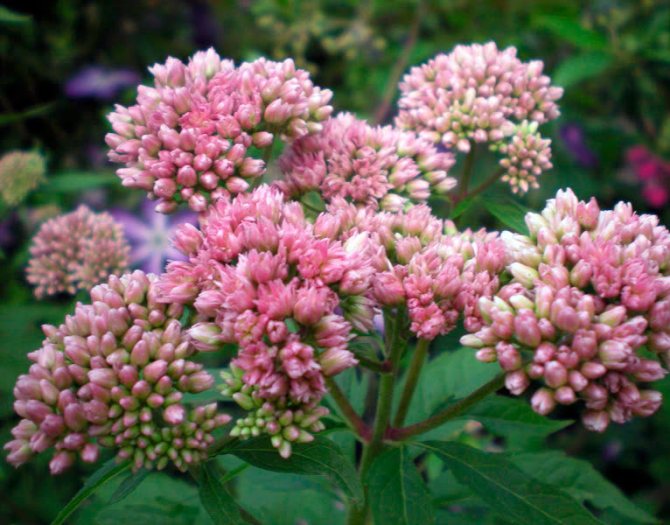
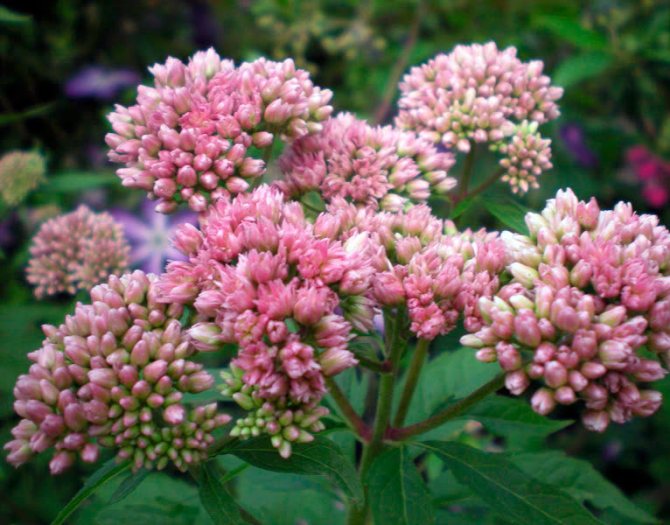
In nature, this species is found almost throughout Europe, while it prefers to grow in streams, swamps and wet meadows. The height of its erect stem can vary from 0,2 to 1 meter. Short-petiolate, slightly pubescent leaf plates serrate along the edge have a finger-split shape, while they include from 3 to 5 segments. Pink baskets are collected in apical corymbose-paniculate inflorescences. The most popular are the following decorative forms:
- Plenum (Flore Pleno)… The height of the bush is about 1,6 m. During long flowering, the plant is decorated with double baskets.
- Variegatum… The height of the bushes is about 0,75 m. Along the edge of the foliage there is an uneven edging of white color, and the bush is also decorated with rich pink flowers.
- Album… The color of the inflorescences is white.
Bone sap (Eupatorium rugosa)

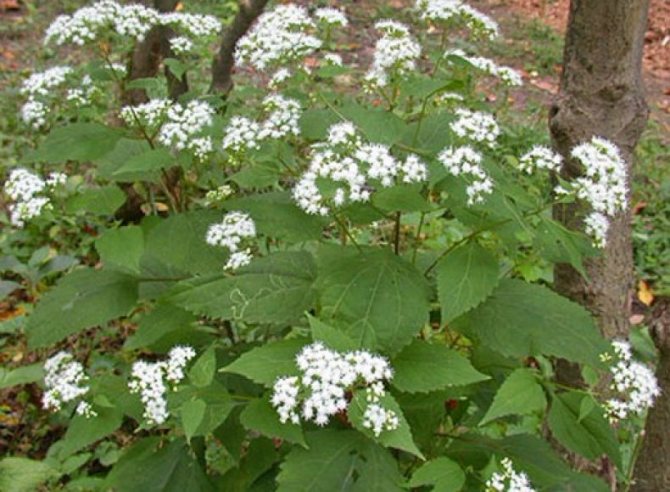
Unlike other species, such a steep sill has opposite oval-shaped leaf plates, as well as a jagged edge. The color of the inflorescences is white. The best varieties of this type are:
- Chocolate… This variety is highly resistant to frost. Glossy leaf plates of a bronze-brown hue have a purple tint during opening. The inflorescences include small white flowers.
- Brownlaub… Plant height is about 150 cm. Buds and young foliage are brown in color.
Purple stew (Eupatorium purpureum)
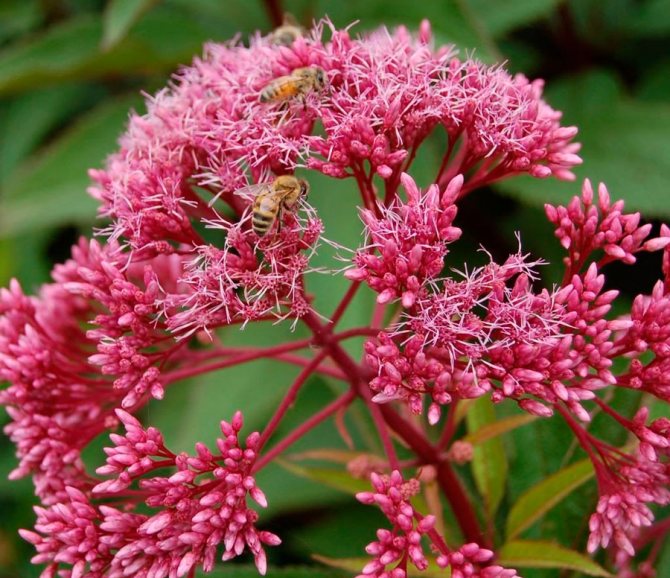

The birthplace of such a rhizome perennial plant is North America, it reaches a height of one and a half meters. Straight shoots are colored greenish-blue. Whorled hairy leaf plates, which have an oval-lanceolate shape, sharpen to the apex, their edge is serrated. Shield-shaped inflorescences, reaching 0,2 m in diameter, consist of small baskets, the color of which can vary from lilac-purple to pinkish. The best varieties of this type:
- Little Red… The height of the compact bushes is about 100 cm, they are decorated with wine-pink inflorescences.
- Little Joe… On the bushes one meter in height, inflorescences grow, consisting of small flowers of a smoky pink hue.
Spotted stepmother (Eupatorium maculatum)
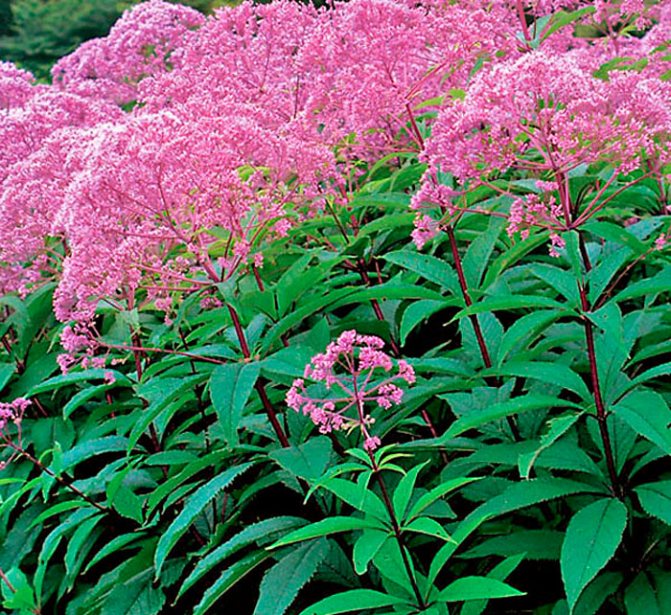
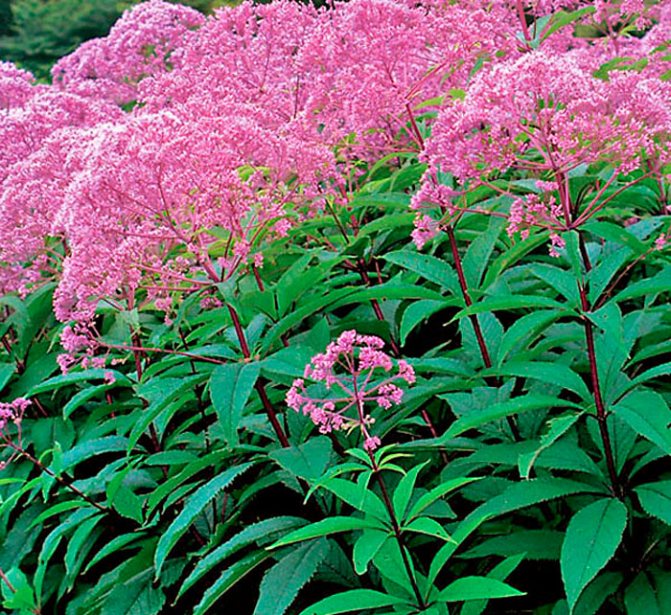
Such a North American plant in nature prefers to grow in forests, thickets and in the meadows of the coastal zone. The height of a powerful bush is about 1,8 m, whorled leaf plates have an elongated shape. The color of the inflorescences is lilac. The following varieties are most popular with gardeners:
- Album… The two-meter bush is decorated with white inflorescences with a grayish tint.
- Atropurpureum… The stems are dark red in height up to 2 m. The color of the flowers is violet-pink.
- Barter Bride… Snow-white inflorescences adorn the plant, reaching a height of up to 240 cm.
- Gateway… The height of the red stems is about 150 cm. The dense dome-shaped inflorescences include mauve flowers.
- Big Ambrellaz… The height of the bush is about 1,8 m. Large caps are formed on red stems, consisting of pinkish-gray inflorescences.
- Karin… Two-meter bushes are decorated with light lavender inflorescences.
- Phantom… In such a hybrid, dark stems reach less than a meter in height. The color of the flowers is gray-lilac.
- Perple Bash… The stems of one and a half meter bushes are dark red. The mauve inflorescences resemble the Gateway variety in appearance, but they are smaller in size.
